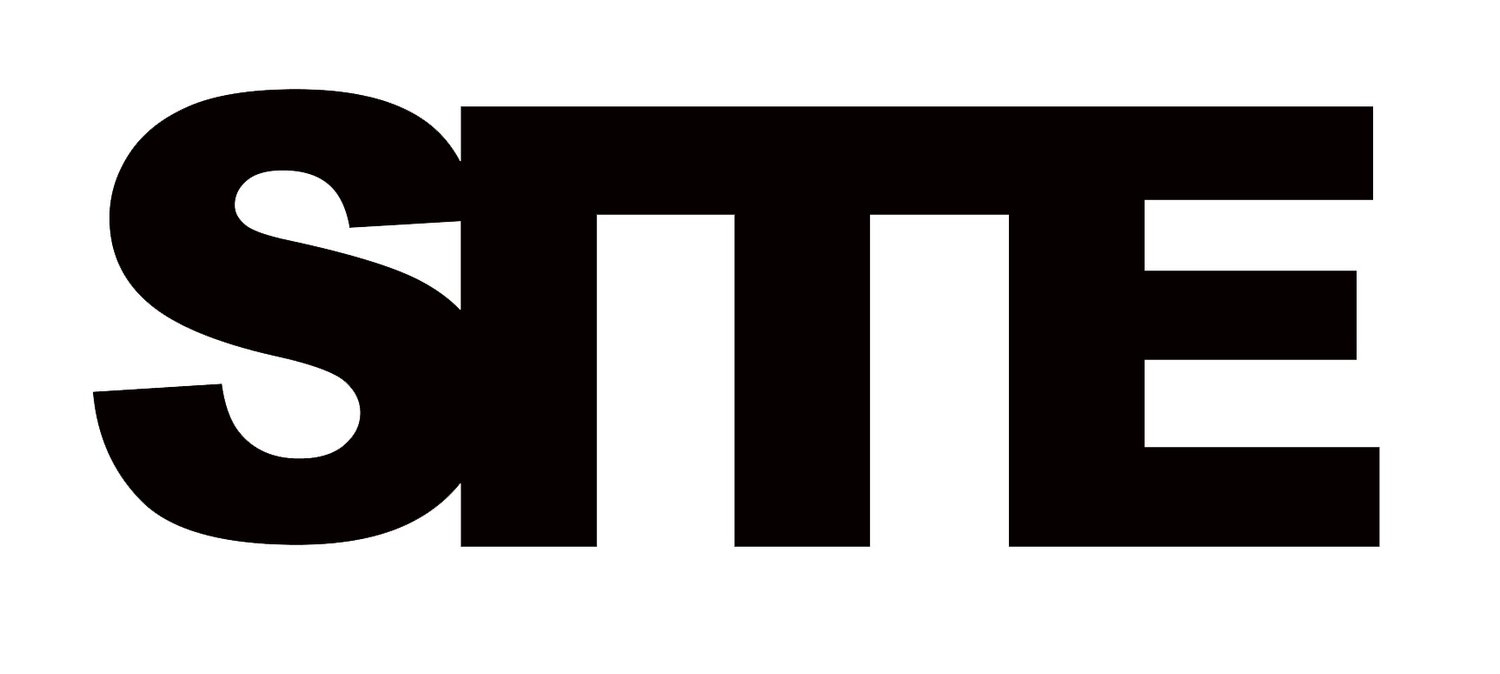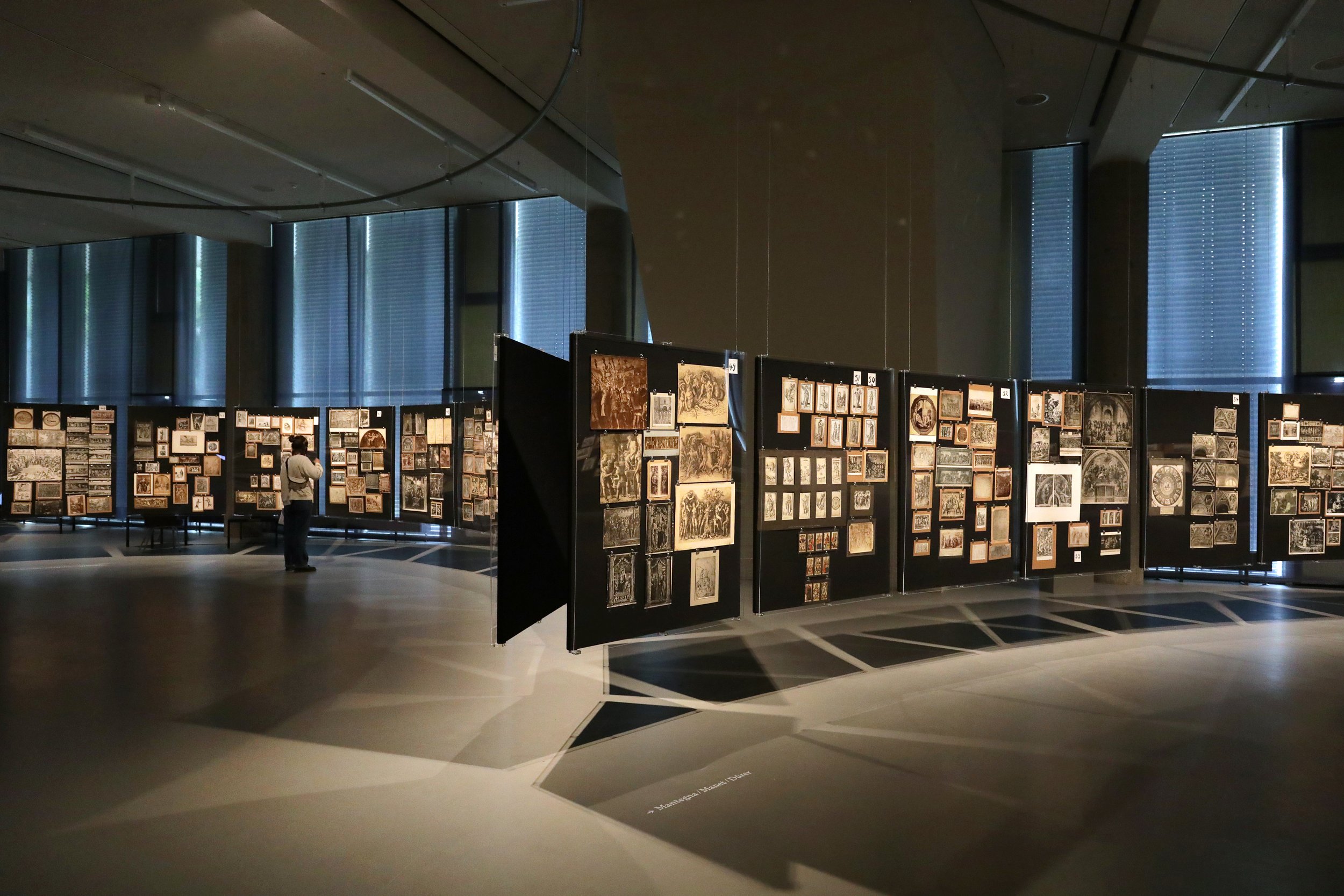Illiberal Arts
Power Ekroth
Haus der Kulturen der Welt | © Sebastian Bolesch
The exhibition spaces in the modernist building Haus der Kulturen der Welt, HKW, pose considerable difficulties for installing exhibitions. The visitor is surrounded by dark concrete, and it feels like the ceiling is low, even though it is not. You feel compressed already as you enter. Since 2013, the curator Anselm Franke has branded most of the exhibitions with a distinct and unrestrained love for what might best be described as “archive exhibitions,” and this is the case also with the exhibition Illiberal Arts, curated by Franke together with Kerstin Stakemeier. Normally, the visitor is offered a large amount of information, presented in a layer-on-layer technique. This is a type of exhibition that demands a lot of time and patience, as the heavy texts presented in the exhibition in combination with time-consuming video work, performances, multiple-day-conferences, and thick catalogs, require two or three consecutive visits if one is to take part of all the presented material. The term “material” instead of “artwork” is used consciously as Franke mixes reference material from diverse disciplines to present a specific model of thought, or different hypotheses, and displays his research material alongside artworks. It feels a bit like walking into a doctoral dissertation, where the researcher has somewhat of a crush on his study objects, and refuses to see flaws or problems. But this also arouses the viewer's admiration for the dedication, determination, and enormous work put into the presentations.
Illiberal Arts is one of the very last parts of a larger project named “The New Alphabet,” which started in 2019 and is to be finished during 2022. “The New Alphabet” project is inspired by the sociologist, filmmaker, and writer Alexander Kluge, and proposes to diagnose and expose the marginalizing and universalizing structures of contemporary society, as well as to initiate strategies for resistance. Other parts of the same project are a large exhibition dealing with the art historian Aby Warburg and his influence on the Western art canon through his Mnemosyne Atlas, which brings together art from all over the world; one on Hubert Fichte, a globetrotting poet who attempted to understand "the other," and is launched by HKW as a German pioneer in queer theory and postcolonial criticism; and one on the acoustic archaeologist/ethnomusicology archivist Umashankar Manthravadi. The exhibitions have always been very dense, compact, and filled to the brim with didactic information.
Image from the exhibition on the legacy of Aby Warburg’s Mnemosyne Atlas
The fashionable artist Anne Imhof was chosen to create the exhibition architecture. Imhof won the golden lion at the Venice Biennale 2017 for her performance work in the German pavilion and is currently showing at the Palais de Tokyo in Paris. At HKW, Imhof has used numerous urban grids of the type that normally cover vent shafts in street environments. Instead of installing the grids as usual - horizontally - the modules hang vertically from the ceiling, forming corridors. The artworks are presented on and around the grids, in the corridors. The modules divide the rooms, but also set up a kind of obstacle for the visitor, and we are forced to bend down to move between the corridors. The idea was originally to create an experience of being in a labyrinth, but the result is instead that of a cold, rational ruthlessness. On the other hand, it fits perfectly into Imhof's universe, with its scenography of cold, repulsive materials associated with authoritarian control. It is an ingenious move to design a room for an illiberal art.
What then would be considered illiberal art? We speak about "Liberal Arts," a term which in the Western tradition, has developed to denote a collective term for general (higher) studies, preferably in the humanities, but has been watered down a lot, and may include a bit of everything from other disciplines. The opposite, illiberal, means "unfree art", and thoughts easily go to art produced in dictatorships with a streamlined expression, but in Franke and Stakemeier's case it is interpreted as something much broader, and linked to how art is produced within the framework of what normally would be termed as free, liberal contexts. The connection is here instead directly made to liberalism as such, and to how liberalism in turn is completely linked to capitalism. The basic idea is that you as an individual own your freedom, that you are more free the more you own, and it is the cornerstone of John Stuart Mill's principles. The core of capitalist freedom, the possessive thought "the more you own, the freer you are," has the consequence that if you do not own anything, you are not able to be free. When tax is seen as theft and not a principle of solidarity and justice, liberalism and capitalism create enormous restrictions and limitations for the great masses - which means that those who live in a liberal-capitalist world automatically live in an illiberal world. Furthermore, it is this world with its mechanisms that has created the colonial processes. All art produced within this structure is defined as illiberal art.
Franke and Stakemeier’s first sentences in the introduction to the exhibition state:
The liberal-capitalist world order that appeared to have cemented itself after 1989 is now in a stage of advanced disintegration. The breakdown of this order reveals the illiberal core of its capitalizing freedoms and forms of property: the violent unfreedom of the propertyless and the willingness of the propertied to use violence. Art, too, turns out to be a site for the negotiations between these violent forces, their limitations and exclusions. What’s more, the ruin of liberality places the modern institution of “institutionalized art” (veranstaltliche Kunst, Arnold Hauser) in a deeply questionable light.
The question quickly appears: does any art at all exist outside of this definition of illiberal, and: is there any such thing as free/liberal art? Is there even a single free thought? The problem is not new, and it is easy to end up on top of Wittgenstein's famous ladder, or to paint oneself into a corner, depending on which metaphor one prefers. Not even an an institution such as HKW can exhibit art without contributing to the neoliberal system; or without contributing to works of art accumulating value on the art market. It’s not possible, even if they would claim that the exhibited art is rubbish. The curators at HKW are of course aware of this fact, and claim that they are not interested in creating a critical exhibition about illiberal contemporary art, but, instead, to produce a "deformation” and a restructuring of the concept by asking the question how free we really are?
These are certainly urgent issues that are constantly present in our news feed. Many of the exhibited works discuss the restricted and illiberal character of everyday life, the way in which it is enclosed by (legalized) violence and abused via, for example, government structures. An example is the film The Mermaids, or Aiden in Wonderland by Karrabing Film Collective, from Australia, which talks about the injustices perpetrated against the indigenous people for hundreds of years. The settlers, who came in between 17th and 19th centuries, have systematically oppressed, pillaged, and exploited native people and their territory ever since. The film is about Aiden, a young representative of the indigenous people, who was taken from his parents as a baby to be used in medical experiments. In the film, he wanders through his devastated homeland and meets older relatives on the way, who tell him about his absurd fate.
Another example is the work of Bill Dietz, an American composer whose 28-minute sound installation EXPOSURE TO FREQUENCIES FROM 43-48HZ CAUSES THE WINDOW PANES ALONG THE WEST GALLERY WALL TO VIBRATE SYMPATHETICALLY SUCH THAT AT SUFFICIENT INTENSITY THEY WILL SHATTER, 2021, can be heard once every hour of the day. The work consists of recorded sound from demonstrations outside the Metropolitan Detention Center in Brooklyn NYC just after the assassination of George Floyd in 2020. Outside the prison we hear the protesters' chants, and from inside the prison loud bangs from the inmates from the cell contribute to the layered sound. The recording is played outside HKW during the day, and inside after closing time.
The artist Ho Rui An from Singapore is represented by one of his more complex and essayistic works, a multi-channel video work, a performative lecture and installation entitled The Economy Enters the People, 2021. Ho makes a deep dive into the specific relationship between China and Singapore , and China's attempts to assimilate a market economy with its party-led state. For Ho, it is clear how China observes and copies Singapore maintains a softer type of dictatorship mixed with a total capitalism, which over the years has managed to reduce discontent. In his economic analysis, global corruption emerges as a result of a dysfunctional capitalism which is a remnant of the imperialist legacy and the division between East and West. The work is a polyphonic narrative that rests on many layers, and is extremely well-informed and complex - and fits perfectly as a separate chapter in the exhibition. The video work, which contains documentary material, lectures, scholarly material and even stereotypical images created by Hollywood in combination with a dose of ironic esprit, is actually enough to absorb a visitor's energy for a full day.
An artist whose work has already been deeply embedded within the capitalist art system is Mikołaj Sobczak, a Polish young artist represented by the bluechip gallery Capitain Petzel in Berlin, presented with 31 small works on paper (The Selections of Works on Paper, 2018 -2020). The colorful paintings are inspired by Soviet-era painters of the 80s, with grotesques and explicit motifs. The choice of motifs, however, is specifically contemporary, and graphically depicts the extremely repressive government attitude towards the rainbow population in Poland: threats, violence, and rape are on the agenda daily, and "LGBTQ-free zones" are implemented on one third of Poland's surface.
From the series of paintings by Mikołaj Sobczak (Naktloopers, 2019) presented in the exhibition Illiberal Arts
The curators of the exhibition highlight the German socialist-feminist author Lu Märten's pre-war concept of the form of life as art. Märtens spoke of "works of life," and that art cannot be separated from human life. Nothing in life could thus end up outside art. The art presented at the institutions was for her completely dead , because it was separated from the life of the artist. That Franke is inclined to agree can be understood from how he builds up his exhibitions, mixing all categories and typs content in a complex muddle - much like how a person's life grows, with ups, downs, ins and outs, and not as a straight line.
It's a rather intense experience to visit a complex exhibition, charged with political statements and issues like Illiberal Arts. But at the same time, the density is so great that visitors soon enough risks giving up the attempt to penetrate the enormous amount of works that are presented, almost as it were a Sisyphean task. Which brings us to another question: for whom is the exhibition actually made? The target group is definitely not high school students or a "new" audience. Of course, it is invigorating to see an exhibition that is created without lowering the threshold, or presenting such detailed educational material that you, as a visitor, feel like a five-year-old, but on the other hand you also feel (literally) forced into a corridor. It is very easy to agree with the theses that are put forward: dictatorship is wrong; there is something wrong with exploitative consumerism; neoliberalism has enormous and terrible consequences; capitalism entails corruption and so on. The exhibition becomes moralistic and didactic, and the works turns into illustrations that prove the exhibition's thesis – but again: who are the recipients?
Perhaps one should not demand of an art exhibition that it be able to expose the oppressive social structures today, or to diagnose the problems and also counteract them, even if these are the curators' direct intentions. Illiberal Arts is an honest attempt in this direction, it is certainly a very big responsibility. Indeed, and a large number of structural problems are pinpointed here. But what does the exhibition do to move forward or outline a future? Imhof's structural and gloomy design, a flirtation with fascist modernism, is certainly interesting, but in this context borders on irony. That the exhibition exudes impenetrability is somewhat counterproductive if the purpose is activist, as well as the fact that the majority of HKW's audience probably do not consider themselves particularly oppressed, but instead enlightened.
It is tempting to play with the idea that it isn’t even possible to imagine a new world, because we are so deeply immersed in a liberal capitalist and hence unfree world. Perhaps we are doomed to discover problems that we then reproduce through the institutions we have created to reflect on our culture. Illiberal Arts points out a particular way forward, which means that we should abolish our concept of art in favor of Marten's concept of life art and, once and for all, finally detach the concept of freedom from the ravages of liberalism. This, of course, would also mean the ruin of (art) institutions. It is obviously very difficult to imagine such a world and what such art would look like. It would instead have been more inspiring to see the artists' fantasies and utopian images of what an "art of living" can look like instad of, as is the case here, reproducing and portraying problematic narratives within a dystopian design.
Illiberal Art
Haus der Kulturen der Welt, Berlin
September 11 – November 21, 2021
Artists: Cassandra Press, Raven Chacon, Cut away, with effects (2021), Bill Dietz, Stephan Dillemuth, Övül Ö. Durmuşoğlu, Thomas Eggerer, Frank Engster, Ciarán Finlayson, keyon gaskin, Melanie Gilligan, Larne Abse Gogarty, Nicholas Grafia, Tamar Guimarães, Natascha Sadr Haghighian, Danny Hayward, Johanna Hedva, Ho Rui An, Anne Imhof, Pauline Curnier Jardin with the Feel Good Cooperative (Dana, Giuliana, Alexandra Lopez, Serena Olcuire, Gilda Star, Barby Valentina), Lisa Jeschke, Karrabing Film Collective, Aristilde Paz Justine Kirby, Anja Kirschner, Dani Leder, Jota Mombaça, Rosalind C. Morris, MYSTI, Jenny Nachtigall, Henrike Naumann, Fumi Okiji, Orakel, Ana Teixeira Pinto, Steve Reinke, Mikołaj Sobczak, Juliana Spahr, Jordan Strafer, Sunset Open Call (Kasi Althaus, Elena Peters Arnolds, Kathy Seitzinger Hepburn, Laura L. LePere, Aude Lèvere, Andrea Victoria Paradiso, Denise Pinnell, Christin Rothe, Suzie Sullivan, Amy Sutryn, Rosana VanHorn), Marina Vishmidt, Simone White, Philip Wiegard, Kandis Williams, Constantina Zavitsanos
This text was originally written for, and published in, the magazine Ord & Bild, nr 5 2021 in Swedish.
All images courtesy of Studio Bowie / HKW









